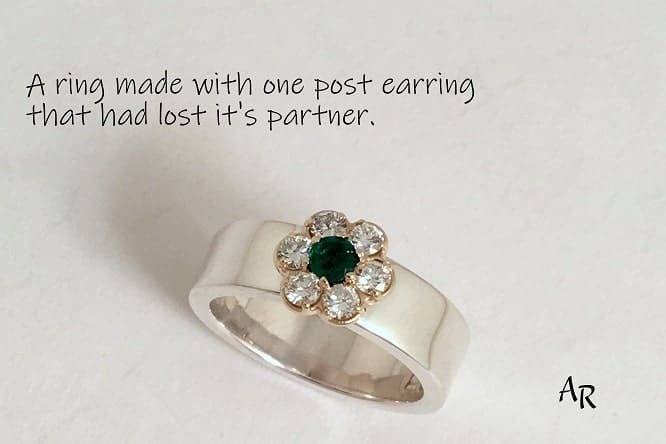We’re always excited to learn about businesses who have taken the reduce, reuse mantra to heart. We’re happy to share this post from Amy Ragsdale who creates sustainable jewelry.
As a jewelry designer for over thirty years, I am aware that the industry has a dirty side. Occasionally the media is upfront about unethical and environmentally damaging practices, but for the most part it goes unchecked. Since 1985, my focus has been on creating singular, ethically sourced jewelry, and educating folks as to why it is essential to support sustainable manufacturing practices and local artists. Like Plaine Products, my goal is to make the world a little better. I’m guessing yours might too.
Conscious Shopping
Also in line with Plaine Products, Amy Ragsdale Design encourages you to return and reuse. In the case of jewelry that is: ‘fix’ and ‘keep using’. This practice starts with being conscious of your purchases.
- Is it made to last?
- What is it made of?
- Can it be repaired?
According to a 2012 study, “research on toxic chemicals in low-cost children’s and adult jewelry found that more than half of the products containing high levels of hazardous chemicals.” The items came from 14 retailers including: Burlington Coat Factory, Target, Claire’s, Forever 21, H&M, Kohl’s, Justice. In October 2018 the Center for Environmental Health revealed some jewelry sold with women’s dresses and shirts was nearly pure cadmium, which can cause cancer and reproductive harm after prolonged exposure. According to The New York Post, “Jewelry with the toxic metal cadmium is showing up on the shelves of national retailers including Ross, Nordstrom Rack and Papaya.”
Super inexpensive jewelry is almost guaranteed to have been made in a factory overseas with little oversight. Besides the potential dangers of wearing of this jewelry, keep in mind that as soon as it breaks it ends up in a landfill. Once broken, it most likely cannot be repaired, and if it can, the cost of repair will far exceed the original cost of the item. All those toxic chemicals are ending up in landfills.
How do we avoid toxic materials and ensure sustainable jewelry?
- Make a commitment to purchase from jewelers who will share with you where they acquire their metal and are able to repair the jewelry. Craftsperson’s who work with Hoover & Strong are good candidates. Located in Richmond Virginia, Hoover & Strong manufactures over 30,000 eco-friendly jewelry products, all Made in the USA with Harmony Recycled Precious Metals.
- Prescribe to ‘minimalism”. Having the intention to scale down and be more selective is good for all. Acquiring a true designer creation, that becomes your signature piece, is far more appealing than having a box full of jewelry you never wear. Designer does not mean fast fashion, such as Gucci, Vuitton or Versace. In fact, Versace only uses gold or silver to plate all of their designs.
- Clean, repair and redesign the jewelry we have. Well-made jewelry can (and should be) cleaned once a year to look as good as new. Make sure stones and clasps are secure. Many pieces that are outdated or are broken can be used in new designs.
- Hand down jewelry that is significant to us. Classic designs can be gifted through generations, becoming more meaningful as time goes by.
Making the world “a little bit better” is a great goal. I hope you take any opportunities to do just that.
Amy Ragsdale, dhB is the resident artist and caretaker of a 42-acre gilded mansion estate in the Delaware Valley. Find out more about Amy and take a video tour of her playground by visiting www.amyragsdale.com



